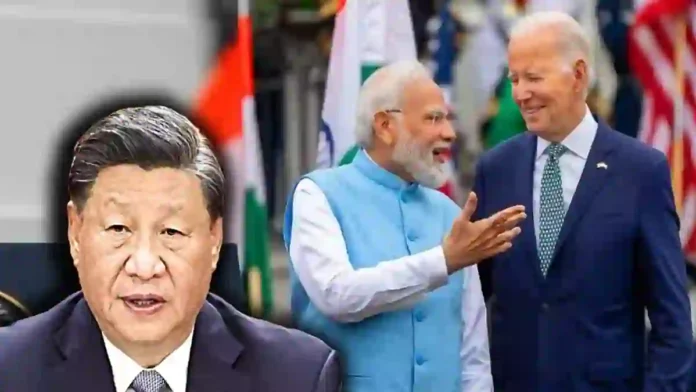While China remains a potent threat for India, there is another permanent thorn in India’s flesh called Pakistan. Despite losing all its conventional and non-conventional conflicts with India, and its economy going broke in the process, it is not giving up its ambitions to wrest control of Kashmir and Punjab from India. And it has been arming itself to the T with the help of China.
With the threat of a two-pronged war always looming large, India has to be militarily and economically powerful enough to fight a war on two fronts. But India’s military modernisation programme has been very slow and archaic weapon systems still form the spine of India’s armed forces. The Atmanirbhar programme aiming at self-sufficiency, will also take a long time to fructify.
At this juncture, India can’t depend on Russia for filling the deficiency in critical military hardware as it is embroiled in the prolonged war with Ukraine and it is facing shortages. The sanctions of Russia by the US only complicates the matter. India is looking at European powers such as France and Germany for augmenting its fighter and armoured fleets. But that’s not going to be enough, considering the massive shortfall India faces in terms of modern military equipment.
The India Air Force is currently down to just 31 fighter squadrons, while the requisite authorised strength is 42 squadrons, and squadron numbers are only expected to rise to 35-36 by the middle of the 2030s. In the meantime, if war breaks out, India’s security will be severely compromised.
At this juncture, if there is any nation which can help India augment its military capabilities is the US. In recent times, India has signed multi-billion dollar-worth defence agreements. Major US defence sales to India over the past 15 years include transport and maritime aircraft (C- 130J Super Hercules, C-17 Globemaster IIIs, and P-8I Poseidon aircraft); transport, maritime, and attack helicopters (CH-47F Chinooks, MH-60R Seahawks, and AH-64E Apaches); Harpoon anti-ship missiles; and M777 howitzers, among others.
Reflecting on the potential of defence partnership, the US Ambassador to India, Eric Garcetti recently said that commerce, technology, people and security are central to this vital partnership at the 2-day ‘US-India Defence News Conclave: Stories of US-India Defence and Security Partnership’ conclave in New Delhi’ organised by US Consulate Kolkata and CUTS International (Consumer Unity & Trust Society).
Ambassador Garcetti said that the United States was with India for the long haul and leaders of both the countries pledged to go further in terms of technology, defense, start-ups, tech and space.
He also said that the US wanted India to be a place where it could come to, to fix its ships, find great jobs, and to know each other’s systems and training. It was a very refreshing statement from a high ranking US official.
Read- GERMANY’S P75(I) INITIATIVE, STEALTH SUBMARINE DEAL HEATS UP
But, the ground reality is completely opposite to the US’ expectations. India does not yet fully trust the US for fulfilling its defence requirements, despite the fact that the latter produces the most state-of-the-art weapon systems.
India’s primary requirement is technology transfer, which is essential for its indigenisation programme but the US wants to maintain its hegemony and is not keen on sharing technology. Additionally, US’ foreign policy is baffling to say the least.
But it must be understood that there is a vast difference between India and the US in all aspects, from economic strength to defence preparedness.
India is perhaps unlikely, with its present economic power and defence preparedness, to be capable to fight a two-front battle alone.
India needs to have defence and economic accords with advanced countries and who could be better than the US. But India’s experience with the US since her independence has been bitter and hence it hasn’t been able to completely trust America.
This reflects in India’s choice of buying its military hardware from old ally Russia against the frowning of US, along with France and Germany who have been ready to transfer technology too.
In the US, the armament lobby perhaps has greater control over its policy making than the US Government and it wants a monopoly for its products.
However, the US has its hands full as far as dealing with international conflicts is concerned – Russia-Ukraine and Iran (Hamas)–Israel to name a few. China and Taiwan can go to war anytime. India is also preoccupied with Pakistan and both can’t tackle the Dragon alone. They need each other for that.
But, the US has to appreciate India’s sovereignty and work as a partner, not behave as a guardian, because you can’t clap with one hand. Earlier the US understands this, it would be good for both the countries.
(With Inputs From Agencies)




